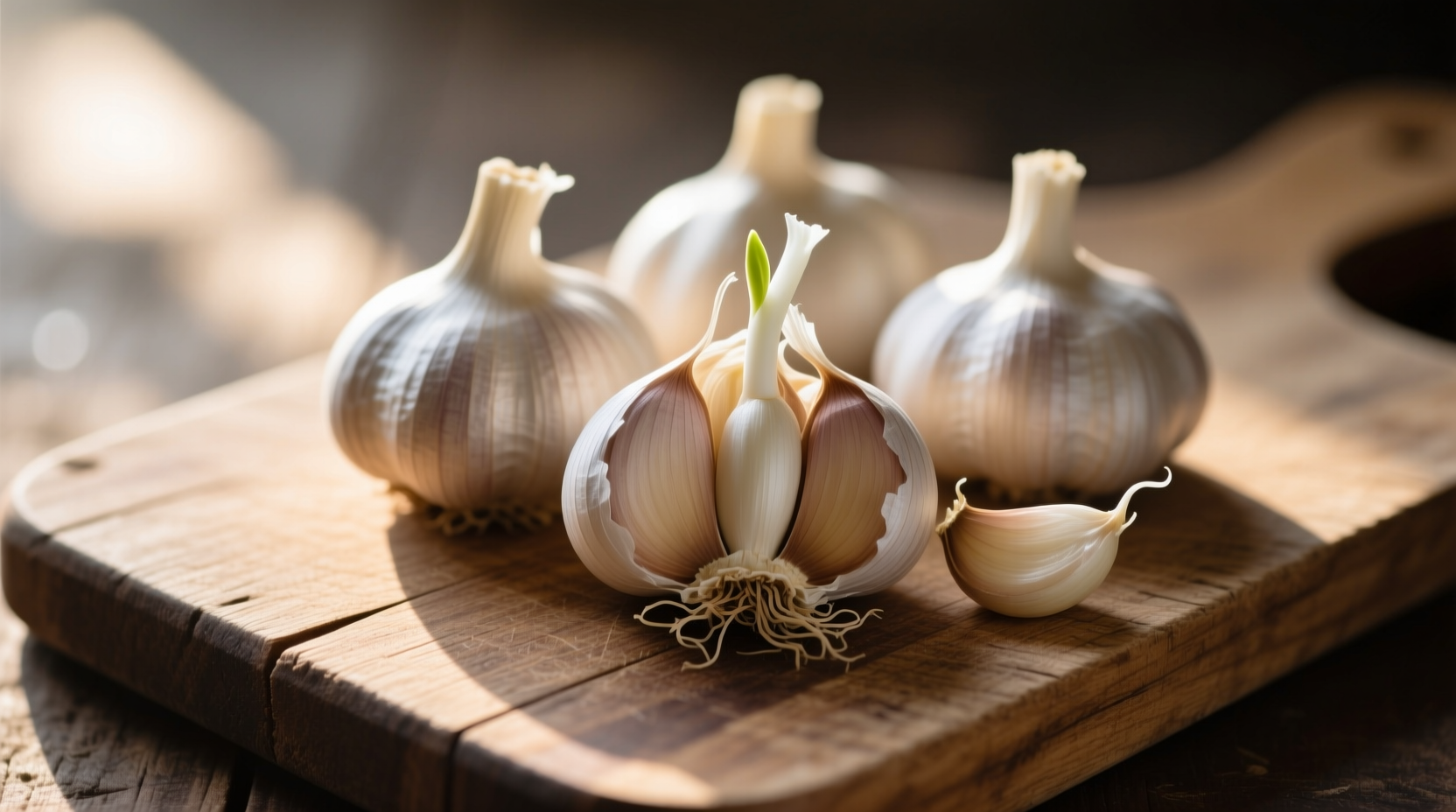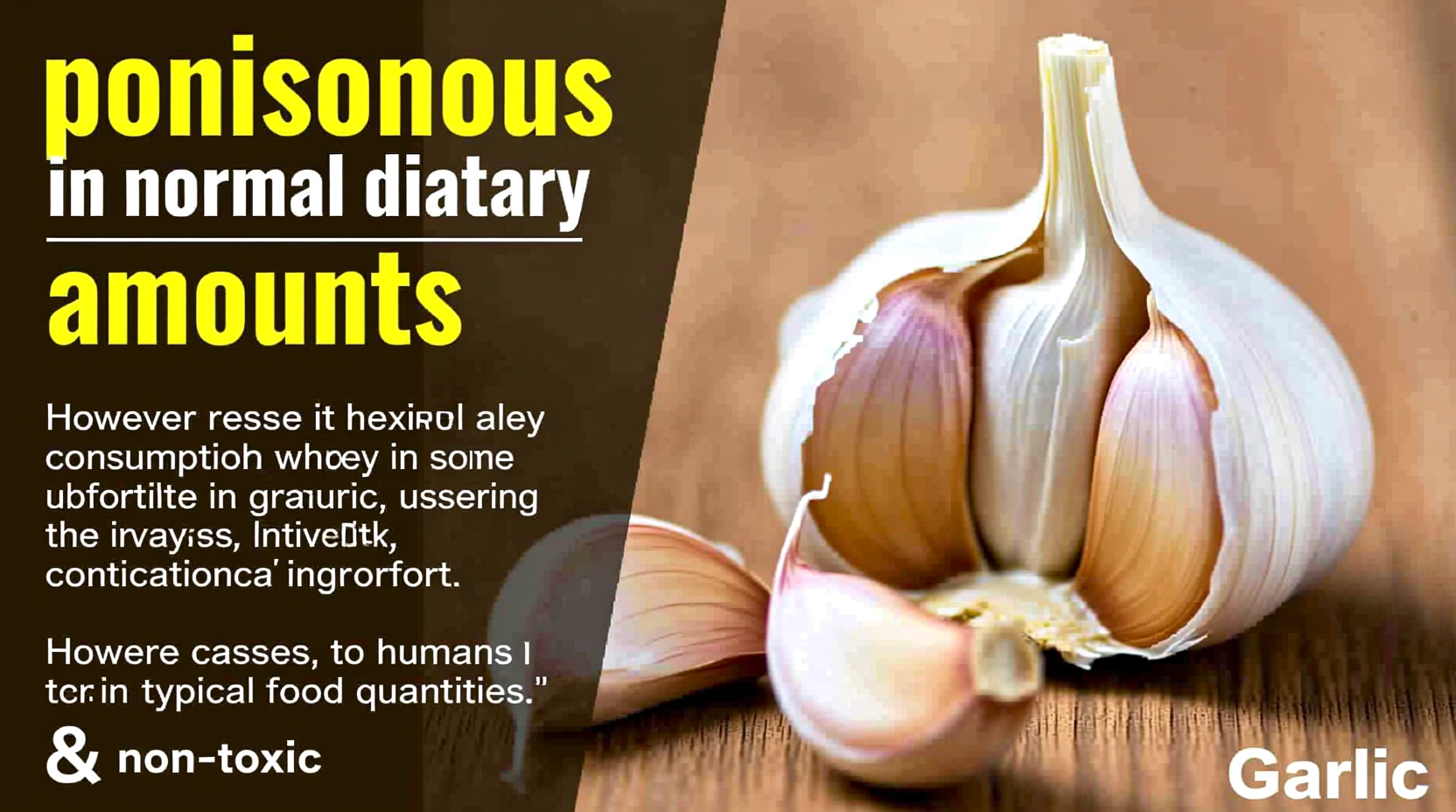Understanding whether is garlic poisonous requires examining both human and animal contexts. This comprehensive guide separates fact from fiction with evidence-based information you can trust.
Garlic Composition: What Makes It Potentially Problematic
Garlic (Allium sativum) contains organosulfur compounds, particularly allicin, which gives garlic its distinctive flavor and aroma. While these compounds provide health benefits in moderate amounts, they can cause issues when consumed excessively.
According to the National Institutes of Health, "garlic is generally recognized as safe when consumed in food amounts." However, the same source notes that "very high intakes of raw garlic (multiple cloves daily) have been associated with adverse effects. "

Human Consumption: Safe Amounts vs. Risk Levels
For healthy adults, garlic is safe and potentially beneficial when used as a culinary ingredient. The European Medicines Agency states that daily consumption of 2-5 mg of allicin (equivalent to approximately 1-2 cloves of fresh garlic) is generally safe.
| Consumption Level | Amount | Effects |
|---|---|---|
| Typical Culinary Use | 1-2 cloves per day | No adverse effects; potential health benefits |
| Moderate Supplementation | 3-5 cloves or 600-1,200 mg extract | Generally safe for most people |
| High Consumption | 10+ cloves daily for extended periods | Potential for digestive upset, bleeding risk |
| Extreme Consumption | 25+ cloves daily | Risk of hemolytic anemia, organ damage |
When Garlic Becomes Problematic for Humans
Certain populations should exercise caution with garlic consumption:
- People with bleeding disorders: Garlic may increase bleeding risk due to its antiplatelet effects
- Pre-surgical patients: Should discontinue high-dose garlic supplements 7-10 days before procedures
- Those with IBS: Garlic contains FODMAPs that may trigger digestive symptoms
- Individuals with G6PD deficiency: At risk for hemolytic anemia from high garlic intake
The U.S. Food and Drug Administration states that while garlic is generally safe, "consumers should be aware that excessive consumption of raw garlic may cause gastrointestinal discomfort, headache, muscle aches, dizziness, and allergic reactions in some individuals."
Garlic Toxicity in Pets: A Serious Concern
Unlike humans, dogs and cats lack the enzyme necessary to properly metabolize garlic compounds. According to the ASPCA Animal Poison Control Center, garlic belongs to the Allium family, which is toxic to pets.
The toxic dose for dogs is approximately 15-30 grams of garlic per kilogram of body weight. However, even smaller amounts consumed regularly can cause cumulative toxicity. Symptoms of garlic poisoning in pets include:
- Vomiting and diarrhea
- Weakness and lethargy
- Red urine (indicating hemolysis)
- Rapid breathing
- Pale gums
Benefits vs. Risks: A Balanced Perspective
When considering is raw garlic poisonous or whether to include it in your diet, it's important to weigh both benefits and potential risks:
Documented Benefits:
- Antimicrobial properties against bacteria and fungi
- Potential cardiovascular benefits including blood pressure reduction
- Antioxidant effects that may reduce oxidative stress
- Possible immune system support
Documented Risks:
- Digestive upset at high doses
- Increased bleeding risk, especially when combined with blood thinners
- Skin irritation from handling raw garlic
- Rare allergic reactions
Practical Guidelines for Safe Garlic Consumption
Follow these evidence-based recommendations to safely enjoy garlic's benefits while minimizing risks:
- For culinary use: 1-2 cloves per day is generally safe for healthy adults
- When using supplements: Follow label instructions and don't exceed 5 mg of allicin daily without medical supervision
- Before surgery: Discontinue high-dose garlic supplements 7-10 days beforehand
- For pets: Keep all garlic products away from animals; contact your vet immediately if ingestion occurs
- Special populations: Consult your healthcare provider before significantly increasing garlic intake if you have bleeding disorders, are pregnant, or take certain medications
When to Seek Medical Attention
While is garlic toxic to humans is generally a no for normal consumption, seek medical attention if you experience:
- Severe digestive distress after consuming large amounts of raw garlic
- Unusual bleeding or bruising
- Symptoms of allergic reaction (hives, difficulty breathing)
- If your pet has consumed garlic and shows any symptoms of poisoning
Remember that individual responses to garlic can vary significantly based on genetics, health status, and other factors. When evaluating how much garlic is toxic, consider your personal health context rather than relying on universal thresholds.











 浙公网安备
33010002000092号
浙公网安备
33010002000092号 浙B2-20120091-4
浙B2-20120091-4